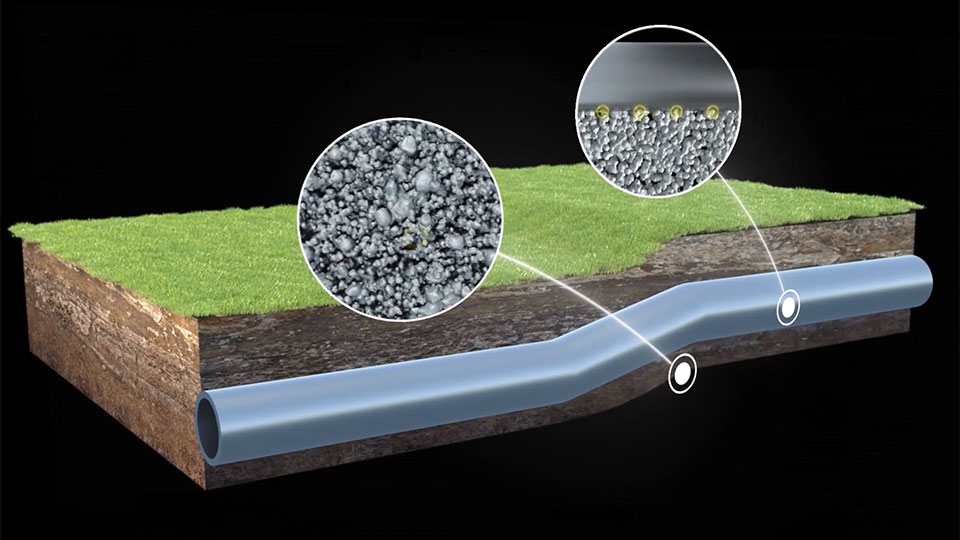Slope ALARMS
Hollin Hill, South Yorkshire, UK
Partners
British Geological Survey
Hollin Hill is a complex of landslides in North Yorkshire, triggered by periods of prolonged rainfall.
The landslides occupy a hillside used for grazing sheep and the farmer has allowed the site to be instrumented to study the landslides.
Active waveguides with Slope ALARMS sensors, inclinometer casings and ShapeAccelArrays (SAAs) have been installed through lobes of landslide material that move most winters on shear surfaces approximately 1.5m below ground level. Monitoring at the site was carried out from early 2010 until 2016.
SAAs installed at Hollin Hill have allowed the comparison of continuous AE with continuous subsurface deformation measurements.
A series of slope movements occurred in response to periods of rainfall in January 2014. Comparisons of AE and sub-surface displacements confirm that:
- AE rates generated by the system are directly proportional to rates of deformation
- AE monitoring of active waveguides can provide continuous information on slope displacements and displacement rates
- the technique is sensitive to small displacements and slow displacement rates
Additional value of the study at Hollin Hill has been provided by conversion of an inclinometer casing into an active waveguide. A small diameter steel tube was installed in the casing and surrounded by sand backfill.
A Slope ALARMS sensor was attached to this waveguide and monitoring conducted, January 2011 to June 2015. The aim was to compare the performance of a waveguide retrofitted in an inclinometer casing and the standard waveguide designs installed in a drilled borehole.
Progress and impact
Measurements of AE during a period of slope movement has shown comparable performance, demonstrating that inclinometer casings can be converted into continuously read real-time monitored instruments using AE monitoring of waveguides installed inside the inclinometer casing.
This has value in cases where curvature of inclinometer casing due to slope movements mean that the casings can no longer be surveyed using a manual inclinometer probe, and provision of in-place inclinometers is too costly.
Published papers
Dixon N, Spriggs MP, Smith A, Meldrum P and Haslam E (2015a) Quantification of reactivated landslide behaviour using acoustic emission monitoring. Landslides 12 (3), 549-560.
Smith A (2015) Quantification of slope deformation behaviour using acoustic emission monitoring. PhD Thesis, School of Civil and Building Engineering, Loughborough University, UK.
Smith A, Dixon N, Meldrum P, Haslam E and Chambers J (2014a) Acoustic emission monitoring of a soil slope: Comparisons with continuous deformation measurements. Géotechnique Letters 4 (4), 255-261. Awarded the Institution of Civil Engineers Thomas Telford Premium (Prize for Best Paper in Journal).
Smith A, Dixon N, Meldrum P and Haslam E (2014b) Inclinometer casings retrofitted with acoustic real-time monitoring systems. Ground Engineering Magazine, October Issue.
Uhlemann S, Smith A, Chambers J, Dixon N, Meldrum P, Dijkstra T, Haslam E, Merritt A and Gunn D (2016a) Assessment of ground-based monitoring techniques applied to landslide investigations. Geomorphology 253 (1), 438-451.
Uhlemann S, Chambers J, Wilkinson P, Maurer H, Meldrum P, Gunn D, Smith A and Dijkstra T (2016b) Long-term 4D geoelectrical imaging of moisture dynamics in an active landslide. AGU Fall Meeting, San Francisco.
